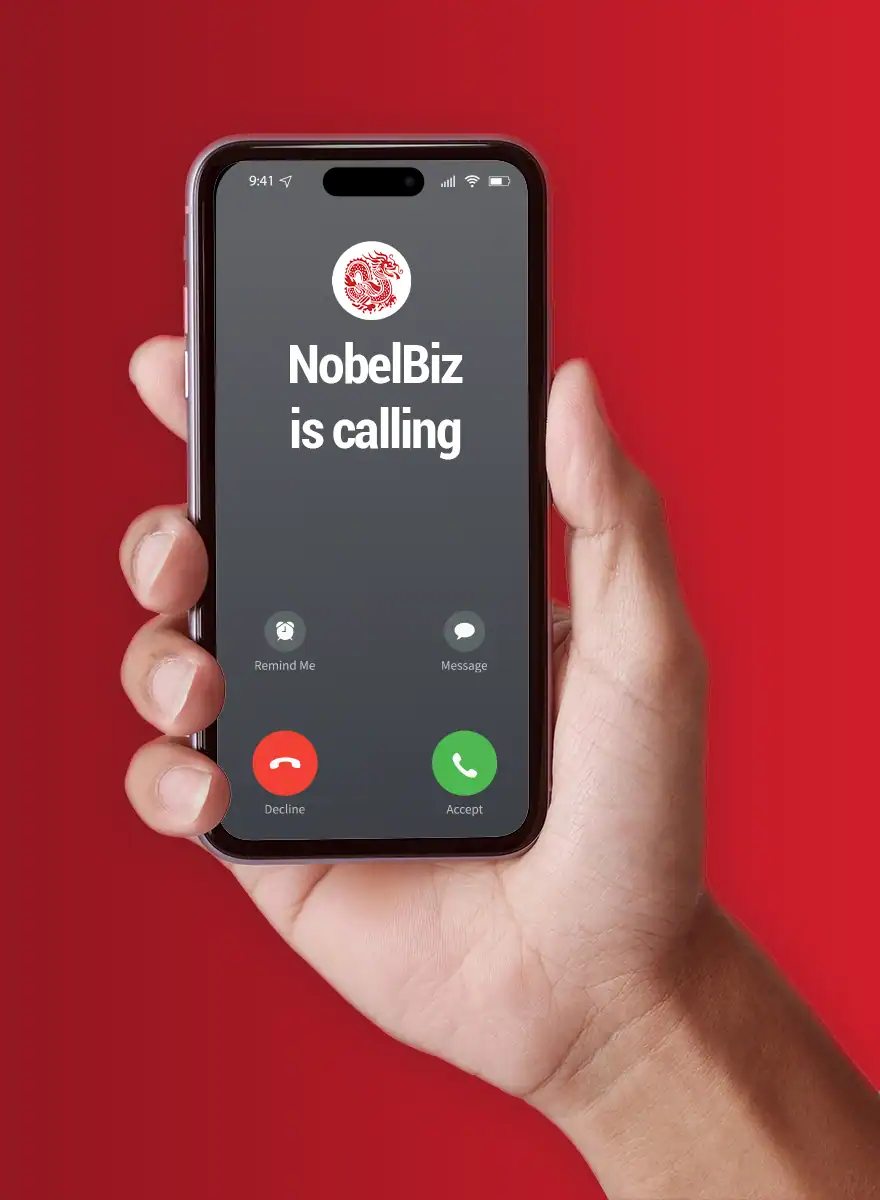These days, the contact center is the face of a company. The customer experience can make or break your business, so it’s important to understand the factors that make a great customer service representative and a great contact center.
However, managing a contact center doesn’t come without its challenges and risks. And these risks are often related to Key Performance Indicators (KPI), Security and Technology.
In this article, we detail 10 of the biggest Risk Factors that most Contact Centers face And How To Resolve Each One of Them.
Why is managing risk factors so important in the contact center industry?
Risk and reward are common deciding factors in contact centers. While taking some risks may deliver you an exceptional customer relationship or considerably greater sales, some risks must not be taken for granted.
When it comes to managing your company’s call center, overlooking numerous areas including analytics, security or technology might have ramifications on your performance, your customer experience, and your operations. And here are the 10 biggest call center factors risks.
1.Call Center Agent Turnover
Call Center turnover is a fact of life in the corporate world. Departures can be attributed to a variety of circumstances, including redundancy, retirement, relocation, or resignation.
The reality is that most contact centers are perceived as a starting job. High call volumes, working circumstances that necessitate modifications, and an intensive rhythm taint this image.
How to mitigate the effects of turnover?
Call Center Turnover is costly since it requires recruiting, training, and support, and it is common for a newbie to be less than fully operational on his or her first day. Fortunately, there are ways to mitigate and even reduce the effects of turnover in a call center.
Provide appropriate working conditions
Clichés are difficult to get rid of. The image of the call center, where employees are lined up next to one other, eyes on a computer, in a constant buzz, and under constant pressure to be listened to and supervised by their supervisor at all times, does not contribute to a peaceful work atmosphere.
To address this, attempt to modify your workplaces to better disperse ambient noise, improve natural light and décor, provide appropriate work equipment, encourage frequent or occasional telecommuting, and encourage contact, trade, and sharing of best practices among telecommuters.
Agents should be involved in the organization
Involving your agents in the operation of the company is a means to recognize their contributions in a positive co-creation process that may produce value for your operation and your consumers. Pay attention to their suggestions and promote initiative, even if it extends outside the tight scope of phone contact or client interactions.
Provide your agents with right technologies
In a call center, it’s the same thing. Give your teams the resources they need to succeed. Decision trees, scripts, customer journey modeling, integration with sales, ERP, and CRM technologies… a comprehensive and tailored software package can ease the job of your call center employees and enhance your internal procedures, especially those for new hires.
2. Call center absenteeism
Call Center Absenteeism is a concerning issue that has a direct impact on the quality of client interactions. It is both costly and damaging to a company’s reputation. Absenteeism, on the other hand, is not lethal. It is possible to successfully lower it by following a few principles.
Contact centers have absence rates that are frequently greater than the national average for all industries combined.
How to lower call center absenteeism rate?
Reassess each employee’s position
Human capital is your company’s most valuable asset. Call Center agents frequently have a hazy understanding of their position, their role in the company, and their opportunities for advancement. Each purpose may be given significance on a daily basis by reassessing each individual’s position. This has a direct influence on their motivation to come to work and invest in their work.
Improving Workplace Well-Being
It is well established that bad working conditions are to blame for a high absenteeism rate. Working in a customer service department frequently includes repeated activities, which can have an influence on contact center workers’ motivation.
Organizing mini-challenges can enhance dedication and unity at work, which can improve well-being in call centers. Encourage individuals to speak up and suggest ways to improve working circumstances. Because, as the old saying goes, happy staff lead to happy customers.
3.Reducing Average Handle Time
Of course, every customer service manager wants to enhance traffic flow while lowering expenses. To put it another way? They aim to decrease the amount of time it takes to handle a call and optimize it to be as short as feasible.
However, keep in mind that the concept of time should never take precedence over the quality of the response offered. The danger exists: by attempting to shorten call duration at all costs, the call center representative diminishes his chances of meeting the customer’s request. The consumer is thus likely to call back for further information, which is bad for your customer experience.
How can the AHT be reduced without affecting quality?
Implement a successful strategy IVR
Customers frequently describe a disappointing experience as a result of an inefficient Interactive Voice Response (IVR) system that provides unclear alternatives, routes their call to the incorrect persons, or misinterprets their input.
Test your IVR to verify that your callers are sent to the appropriate service as fast as possible, reducing the time it takes to connect with an agent who may need to transfer the call.
Create an effective training for your agents.
There is an instruction manual to know at the heart of each optimization. In customer relations, this begins with training on the instruments that have been placed in the hands of your teleconsultant teams.
Training that also helps you to maximize your call center agents’ dedication! This training must be well-planned and tailored: you must take the time to cover all of the relevant functionalities and ensure that your workers have mastered their equipment. Above all, don’t omit anything. Every day, effective training saves time!
Improve your staff management
Agents who can handle calls more quickly and effectively can better satisfy the requirements of callers, resulting in improved first-call resolution rates and increased customer satisfaction.
Furthermore, empowering contact center personnel to manage the quantity of calls in their personal queue might incentivize them to minimize call times when queues surpass a specific level. Of course, if you believe your call center quality management is currently at an optimum level, it may be time to add extra personnel.
4.Improving First Call Resolution
The FCR or first call resolution shows your ability to handle client concerns on the first try, with no follow-up necessary.
However, the FCR is actually a measure of how successfully your contact center runs its operations. It is determined by a variety of factors, including the types and complexity of requests handled, the experience of your agents, the quality of their training, and the tools accessible to them.
Collect client feedback
The FCR key problem is determining the precise instant when the request was resolved. Customer input is critical for this. The organization must conduct post-contact studies to solicit consumer feedback and assess the performance of customer care agents. Satisfaction surveys are an excellent approach to check that the customer’s request has been addressed.
Use a call center omnichannel approach
First Call Resolution was initially intended for phone calls. Companies, on the other hand, must now develop a omnichannel strategy: the initial point of contact with the consumer is not always the first phone call. As a result, it is vital to consolidate all customer communication channels in order to harmonize consumer knowledge inside a single database.
Distinguish between the concepts of immediacy and efficiency
FCR is not a race against the clock that might lead to hurriedness and inaccuracy. An agent does not always have the solution right away: it might be in an email a few hours later or in the intervention of a technician at home over the next several days. The client will regard this alternate answer favourably as long as it is relevant and effective.
5.The key to customer satisfaction
Listening to your customer is the first step. When a customer has an attentive ear listening to them, they feel important and valued and that is the heart of customer experience in contact centers. This will help you to build trust with the consumer and collect valuable data to better serve the customer. Knowing his expectations and demands will allow you to better understand him and tailor your speech and arguments to his needs. Similarly, you may discover the customer’s issues and swiftly suggest applicable options.
In the omnichannel setting, leveraging social media is also a means to learn about consumer satisfaction and needs. Indeed, paying attention to feedback and comments made on social media, as well as the results of a customer satisfaction survey, is a method for improving the customer experience. Use it to boost customer satisfaction.
You can’t read people’s minds, so anticipating their requirements might be difficult. But what you can do is go under the skin of the consumer and attempt to figure out what inspires them. Colin Shaw, CEO and Founder of Beyond Philosophy, provides an excellent illustration of this, so listen in and learn more. And specifically How to anticipate Customer Needs in Contact Centers?
6.Call Center After-work
The after call work or ACW is a metric that assesses how long it takes a call center agents to document and finish activities following each client interaction.
How to reduce after call work in a call center?
The key to lowering the after-call work is in the correct tools for your contact center that will save your agent’s time. The clearer and more precise the interface, the more efficient they may be. They can even conduct part of this work while on the phone with customers, describing what they are doing and how it will help them (making sure they have the right information, the right date, that they have the right interaction topic, etc.).
Furthermore, the introduction of AI technologies currently provides solutions that ease qualifying and resolution work by recommending categories and solutions. As a result, the agent is assisted in the entry and closing of the case, resulting in increased efficiency and productivity.
7.Training and adapting to the remote work environment
As businesses attempt to provide a uniform and consistent client experience, the transition to remote and hybrid workforce in contact centers has presented new obstacles. The consumer expects and deserves an excellent experience regardless of where the agent is situated, whether at home or in a huge shared center.
As a result, training must adapt to the new reality, and call center managers must guarantee that all training, from initial onboarding to the most recent vital product upgrades, is digitally available, appropriately distributed, and up to date.
To guarantee that new workers learn the relevant skills in an organized manner, a knowledge management software with automated self-testing can be developed. This may also be used to notify the entire staff of updates, such as when a new product line is released.
Even if this cannot be done face-to-face, the function of simulations should not be overlooked. The best approach to assess a person’s ability to manage calls is to put them behind a phone first, putting online learning to the test in a real-world setting.
8.Call Center Work environment
Customers will receive outstanding customer experience if contact center agents operate in a positive work environment. Providing your agents with an efficient workplace and appropriate technology is part of creating a healthy work environment. As they should be provided with functional communication methods, comfortable chairs, and desk space. While also giving them more autonomy.
Businesses must also listen to their agents and make them feel valued. Organizations may enhance the employee experience by soliciting input from workers on what works and what doesn’t. Businesses should also acknowledge and appreciate their agents’ hard work and efforts, rather to simply dealing with them when they’ve done something wrong.
9.Customer Expectations are Changing
Consumer technology is fast developing, and the developments that occurred during pandemic containment periods hastened the adoption of new communication channels. It is also critical to give clients with the best possible experience when they contact the organization. The omnichannel approach distinguishes itself by allowing for a seamless customer journey.
It is possible to have a continuous and unified journey by going from phone to mail or from social networks to chat. Customers are no longer need to resubmit their requests while switching from one channel to another. It is not, however, restricted to the usage of numerous channels. The omnichannel approach primarily entails linking these many channels. It allows consumers to transition from one channel to another while contacting the firm.
However, it is critical to recognize that today’s client is arguably more sophisticated and connected than ever before. This makes customer engagement more tricky than before. As their expectations are shaped by the most recent social media experience. It provides an omnichannel, native, and mobile experience. That is why contact centers must adapt a true omnichannel technology that can bring all communication channels into one platform while also creating a comprehensive history of each customer.
10.Security & Data protection in Contact Centers
Your contact center is staffed by operators who make and receive phone calls using call center software. From another perspective, the agents who comprise it are mere people who are susceptible to psychological manipulation. As a result, the danger of data piracy is high, particularly in telecommunications. And here’s how to safeguard and secure your call center.
- Authenticate your users: Access to services must be restricted in order to ensure the dependability of your call center. It is recommended that each operator have their own user account.
- Authenticate your callers: Call center operators may be manipulated psychologically. To accomplish this, we propose that you use memory and hardware factors to verify your callers.
- Customer Data security: Access to personal information should be limited to departments that engage directly with consumers. Currently, technological innovation allows for the enhancement of data protection. There are firms that provide effective security gadgets. However, before implementing a security policy, it is necessary to identify any possible gaps in your personal data management.
 Many customer experience gains are stopped because executives fail to see the value. But when they see it for themselves, it puts everything into perspective. Colin, Founder & CEO of Beyond Philosophy LLC, has decades of expertise in this field and assists executives in establishing the proper perspective on the power of CX in contact centers.
Many customer experience gains are stopped because executives fail to see the value. But when they see it for themselves, it puts everything into perspective. Colin, Founder & CEO of Beyond Philosophy LLC, has decades of expertise in this field and assists executives in establishing the proper perspective on the power of CX in contact centers.
Conclusion
Now that you know the risks that most contact center face and they affect both customers and agents.
But even with all these variables, contact centers have the potential to be both a pleasant place to work and a readily accessible solution for customer difficulties. Our top suggestions are:
- Gather input from your contact agents
- Define the right KPIs for your campaigns.
- Fix your work environment
- Invest in omnichannel & cloud contact center technologies
If you’re looking for a solution that can handles all communication channels, customer data and your most important key performance indicators. Look no further than NobelBiz Omni+!
NobelBiz Omni+ is the first Omnichannel Cloud Contact Center Solution built for a cost-effective future-proof organization, with fast and easy installation that simply requires a browser and a user-friendly platform that enables a seamless transition across the diversity of channels it supports.
NobelBiz is a Cloud Contact Center Solutions Provider focusing in building breakthrough omnichannel call center software while also delivering a one-of-a-kind telecom carrier network meant to accelerate both incoming and outgoing Call Centers into the future.
We’re also renowned as the “Promise Keepers” in our field. The reason behind this is that we are always coming up with new and imaginative ways to transform failing contact centers into high-performing Intelligent Contact Centers.

Michael McGuire is a contact center industry expert with almost two decades of experience in the space. His experience includes roles as Director of Contact Center Digital Transformation at NobelBiz, and as Director of Operations at FLS Connect, managing multiple call centers. As President of Anomaly Squared and Targeted Metrics, Michael successfully transitioned companies into remote operations and significantly boosted revenues. With a strong background in customer service, leadership, strategic planning, and operations management, Michael excels in driving growth and innovation in the call center space.
Mike is also a proud Board Member for R.E.A.C.H Trade Group, promoting consumer protection and satisfaction and Co-host of the Off Skripted Podcast – a show about Life, Call Centers and everything in between.







